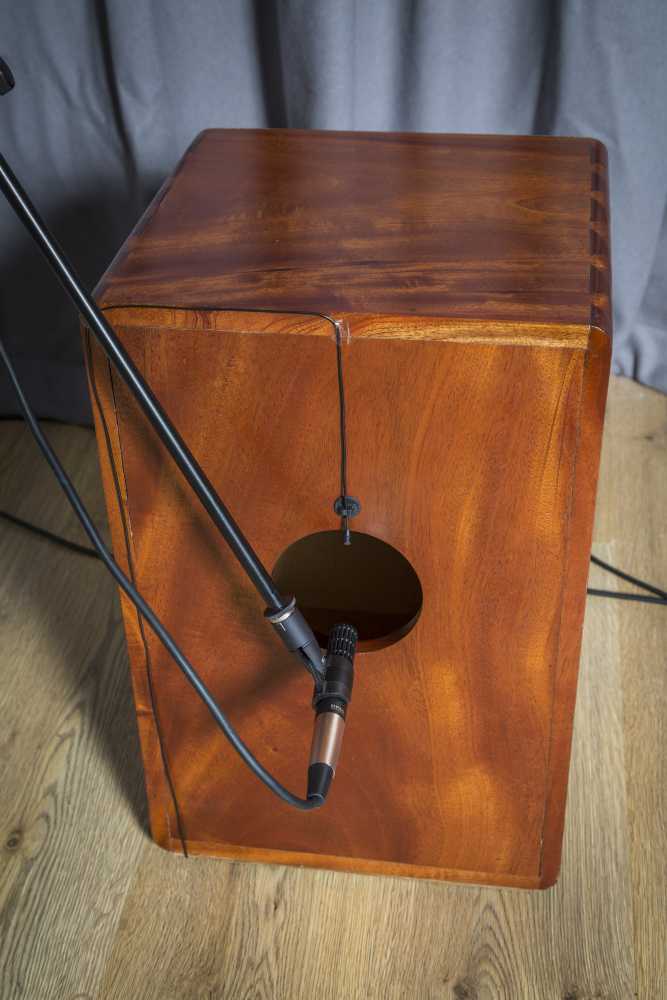DPA brings clarity to the Cajón Drum
- Details

Malambo has performed in many of London’s top music venues and festivals, including the Southbank Centre (Royal Festival Hall and Queen Elizabeth Hall), the Bloomsbury and Ealing Festivals,and on the club and corporate entertainment circuit. Corporate gigs can take place in some very unusual and acoustically problematic spaces not designed for critical listening – such as the Victoria & Albert Museum Refreshment Rooms and Cannon Bridge Roof Gardens in London.
Mortara plays a variety of ethnic percussion and his principle instrument is the cajón. Originally from Peru, this all-wooden box drum is played by slapping the front face with the hands, fingers, or sometimes various implements such as brushes, mallets, or sticks.
“For years, I struggled to achieve a decent, faithful live sound on cajón with those popular models of directional dynamic microphones one encounters on-stage,” explains Mortara. “Although directional dynamic microphones can be great, my sound always lacked articulation and ‘sparkle’; as greater mass and inertia of the moving parts in dynamic microphones (compared to condenser microphones) ‘smear’ transient details.
“Also, the sound character of my instruments would change when placing directional dynamic microphones up very close, to minimize reverberant spill and feedback, because these microphones exhibit bass ‘tip-up’ (known as the Proximity Effect). I’d spend ages during sound checks getting the engineer to adjust EQ settings for something sounding natural. On occasions, my cajón would end up sounding like I was playing a biscuit tin.”
After hearing good reports about DPA microphones, Mortara contacted UK distributor Sound Network and was put in touch with Les Mommsen, chief technician at London’s Union Chapel – a venue that has won awards for the high quality of its sound reinforcement. Mommsen suggested a close mic solution that involved the use of two d:dicate 2011C Cardioid Condenser microphones – one front and one rear – plus a d:screet 4061 Miniature Omnidirectional Condenser capsule, which was used as a low level mixing option and positioned on the ‘sweet spot’ of the cajón’s rear sound porthole.
(Jim Evans)
















